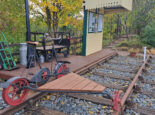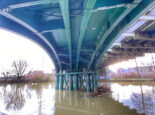Recycle more!

Not so long ago we simply sent our waste to landfill and forgot about it. But a combination of shrinking landfill space, environmental concern and cost has changed our relationship with waste forever. Today nearly half our waste is recycled, yet there’s plenty of scope for improvement, as Ben Vanheems explains
Do you remember when the removal of household waste consisted of a single collection?
Like clockwork we’d place the rubbish out for collection once a week. And every week it would disappear, as if by magic. Few of us gave it a second thought – which was a big problem. Out of sight is out of mind, and so the total weight of waste we generated grew steadily, year by year. All the while volume of landfill shrunk at an alarming rate. With space at a premium on our crowded island, simply creating new landfill sites wasn’t a viable longterm solution, particularly when you consider that some types of waste can take literally thousands of years to break down. Add to this the fact that landfill is a significant source of methane, a potent gas that contributes to climate change, and clearly something had to change. The solution, of course, was to recycle…
Diverting waste from landfill had a number of immediate effects. Because waste can be turned into new products – recycled – fewer raw materials are needed to make new things. This not only saves resources, it saves valuable energy and money. Some waste, such as food scraps, can be used to create energy to power our homes and fertiliser to grow the crops that feed us. By shunning landfill, councils also found they could save money. Sending waste to landfill costs a lot of money. The money saved could be ploughed back into other council frontline services, such as health and social care. And less landfill means dramatic savings in climate change gas emissions, bringing measurable benefits to the wider environment.
Today Peterborough’s households recycle, compost or reuse around 45% of their waste, a vast improvement from even a decade ago. But with the highest performing councils achieving a 67% recycling and composting rate, there’s still scope for improvement. Recent changes to waste management by the city council are helping to drive forward the changes required to boost recycling rates. And the initial results are promising. So where does all your waste go? And why should you make the effort to recycle? Let’s lift the wheelie bin lid on the council’s waste management strategy and find out.
Mixed recycling
Recycling has never been easier. There’s no need to sort it – just rinse where appropriate then place straight into your green bin. Plastic packaging, food tins and drinks cans, paper of all types, cardboard, cartons and glass can all be recycled. Since September 2014 it’s also been possible to recycle plastic film and carrier bags, leaving very little left to go into your black bin.
Amy Nebel, Recycling Contracts Officer at Peterborough City Council, emphasizes how straightforward recycling should be: ‘Having one bin for recycling makes it really very easy. People don’t need to over-think things. For example, I often get emails asking what types of plastic packaging can be recycled. The answer’s simple: we want all types of plastic packaging, whether it’s food packaging including bread and salad bags, film, milk bottles or yoghurt pots.’
Recycling has got a lot simpler since the council started sending collected recyclables to the state-of-the-art materials recycling facility (MRF) in Waterbeach. The facility opened at the end of 2012 and processes mixed recyclable materials from both households and businesses. The reason recycling can be placed into one bin is down to the facility’s remarkable sorting equipment and machines. Recycling moves through no less than 11 machines, which separate out, material by material, everything from plastics, cardboard, metals and paper.
To witness the process is nothing short of awe-inspiring! After unloading the recycling into a massive tipping hall it is moved along conveyor belts for processing by both machine and hand. The council collects an average of 1,500 tonnes of recycling every month. Around 7-8% of the material collected turns out to be nonrecyclables – waste that shouldn’t be in the green bins like nappies – so the first job is to remove these items, which if left could damage the machinery. The recycling is then sorted using a combination of suction systems, magnets and a glass breaker. Optical sorters separate plastic from paper. Magnets remove ferrous metals, while an eddy current separator splits non-ferrous metals from non-metallic items. An advanced system of sensors uses infrared light to separate out the different types of plastics, with targeted air jets blowing each of them onto different conveyors. The machinery is capable of separating out every different type of plastic, from milk containers, clear plastic bottles, coloured plastic bottles, pots, tubs and trays to plastic film.
Throughout the process the waste undergoes hand sorting to check for any items that shouldn’t be there that may have made it through. The sorted waste is held in massive storage skips where it’s then pressed into bales and sent off for recycling. Paper, cardboard and glass is recycled into new paper, cardboard and glass items. Plastic is reincarnated as new packaging, clothing, pipes and plastic furniture, while metals become anything from new tins to new cars!
Aiming high
About 30% of Peterborough’s waste collected from the kerbside is dry mixed recycling (garden and food waste make up the remaining 15%). ‘The highest performing councils are achieving around 45% for dry recycling and overall recycling and composting rates of 67% compared to Peterborough’s 45% so there is still a lot of work to be done in improving recycling rates,’ says Amy. ‘The local authorities that are achieving the highest recycling rates have recycling services similar to us, so there’s no reason Peterborough can’t aim as high.’
A 2014 analysis of the city’s waste discovered that residual bins – that’s the black bins that contain all the waste that can’t be recycled – contained significant levels of plastics (11.9%), paper and card (10.8%), glass (3.4%) and metals (2.2%). Food waste made up a further 28% of residual waste. In other words, more than half of what was in the bins shouldn’t have been there! Some progress has been made since, but there is still a long way to go.
One approach to driving up recycling rates is to reward communities for improving their recycling rates. The council is currently running a recycling rewards scheme called Love Peterborough, Love Your Community. The initiative is and recycle by issuing green points, which translate to money donated to local charities and community projects.
‘We basically look at the statistics to find out which areas are recycling the most,’ explains Amy. ‘Local residents can logon, create their own account, then earn points for doing environmentally friendly things such as putting their food waste caddy out. The scheme was only launched late last year but is already having the effect of improving recycling rates and getting people more engaged in recycling.’ The first rewards of money donated through the scheme were awarded in spring to three city-wide groups: the Peterborough Food Bank, Inspire Peterborough and The Green Backyard, which received £3,000, £2,000 and £1,000 respectively.
Food recycling
The city’s food recycling rate is one area that has seen spectacular improvements during the last few months thanks to a concerted effort by the council to remove all barriers to recycling this type of waste Residents received a leaflet reiterating what goes into which bin, removing any confusion, while recyclers now receive free kitchen caddy liners. ‘The roll of liners includes a bin hanger to display on your outside grey food caddy when you need a replacement roll,’ explains Amy. ‘This has helped a lot, as there’s no longer any need to go out and buy these liners. Food waste recycling has jumped by 23% since the beginning of the year. In June alone 403 tonnes of food was collected, an increase of 140 tonnes on a year earlier. ‘We would like to say thank you to everyone for their part in achieving these results. The significant increase we’ve witnessed is squarely down to people doing the right thing and making the effort to separate their food waste. Please keep it up!’ adds Amy.
Getting the message out
To help educate the public about waste the Energy Recovery Facility in Fengate has just opened an educational room that will help explain the ins and outs of recycling and energy recovery to curious youngsters and community groups.
‘Visitors to the facility can go on a journey to see what happens to their household waste and learn about the importance of recycling,’ says Amy. ‘It’s actually quite incredible to peer into the bunker where all the waste is stored before burning. You can see a lot of recycling in amongst it, which really helps to get the message across that it should not be there!’ Viridor, who operates the ERF, and Amey, who collect the waste and run the recycling plant, are working together to promote the education opportunities at the ERF. It is hoped that by encouraging school trips to the facility behaviour change can be driven in the next generation, creating a real force for good.
Like every city across the country, attitudes to waste and what we do with it have come a long way in Peterborough over the past decade. If recycling rates can climb so high, so quickly, then the next ten years can only be greener. ‘Residents of Peterborough should feel very proud of the progress that’s been made, but with the right encouragement, we hope to see equal progress in the coming years,’ says Amy. ‘Keep recycling, because it’s making a big difference.’
Be a star recycler!
■ Sort it out: Green bins are for recycling only. Nappies should go in your black bin, clothes should go to charity shops or textile banks, while large plastic sheets and heavy metal items should be taken to the household recycling centre in Dogsthorpe.
■ Rinse it out: Recycling covered in food can spoil the rest of the load and reduce its value, so make sure you wash and squash food containers before recycling.
■ Don’t forget: It’s easy to overlook recycling from bins dotted around the house. Don’t forget to recycle items such as aerosol cans and empty bathroom bleach bottles too.
■ Old electricals: Donate unwanted small electrical items to local charity Sense. Kettles, irons, radios and more can all be donated. For details and to arrange a collection visit www. peterborough.gov.uk/residents/ rubbish-and-recycling/otherwaste- collections
■ Over load: Got more recycling than will fit in your green bin? Just put the excess into clear bags and these will be collected too.
Find out more Learn more about what happens to your waste, the benefits of recycling and where and how to recycle on the Recycle for Cambridgeshire and Peterborough website: www.cambridgeshire.gov.uk/recap
Image: www.freepik.com/free-vector/recycle-symbol















